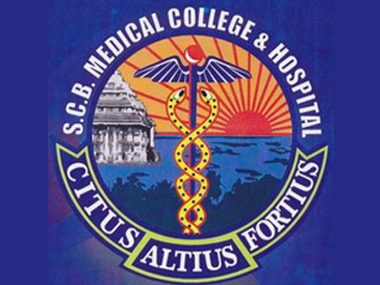It’s a skill-oriented course to provide a Knowledge, Understanding and practice to an individual to perform diagnostic imaging examinations such as X-ray images, and Mammography scans under the guidance of a Radiologist. Prepare the patients, unit & machine for tests. keep patient records and test recommended along with maintaining the standards of equipment.
X- ray Technology
X- ray Technology
Course Attendees
Still no participant
Course Reviews
Still no reviews
Code(Credit) : SFS (0-2-2)
| Scheme | Skill for Success (SFS) |
| NSQF Level | 3 |
| Duration | 4 Months |
| Sector | Health |
| Occupations | X- Ray Technician |
| Entry Qualification | XII, Class X also considered in certain situations |
| Minimum Age | 18 Years |
| Aligned to (QP) | |
Course Objectives:
The objectives of this subject are:
- Covers the practical application of radiography in the paramedical profession.
- Includes principles of x-ray production, the operation and uses of x-ray machines, the care and development of films, and radiographic positioning of patients.
- Prerequisites: Admission to the X-Ray Technology program.
- Use an understanding of diagnostic quality images to determine options to correct deficiencies and to maximize diagnostic benefit and minimize radiation exposure based on repeated images.
- Apply knowledge of the health risks and effective safety procedures and professional judgment to minimize risks to personnel and patients during radiographic procedures.
After completing this program-
- The student will be able to safely and effectively : Prepare radiographic and darkroom equipment, Choose an appropriate radiographic technique to minimize the need for repeat exposures, Produce the latent image, Process the exposed film, analyze the final radiograph for quality in order to provide maximum diagnostic benefit.
- The individual will be able to Handle X-ray equipment’s, develop exposed x-ray films, Prepare the room, apparatus, and instruments for conventional radiological procedures like X-ray and Mammography and Set up the machine for the desired procedure
- Trainee will be able to position the patient correctly for an x-ray in the following positions: Erect, Sitting, supine, prone, lateral, oblique, decubitus
- Able to explain relative positions of x-ray tube and patient and the relevant exposure factors related to these
- Explain the use of accessories such as Radiographic cones, grid and positioning aids
- Setting up the equipment for images & ensuring safety from radiation to patients, self, coworkers
- Can assist in the department of Radio-diagnosis
- Can further pursue Diploma/ Degree courses in the same
Learning Record:
The trainee will submit a Practice/Project/Learning record after each class/session.
Assessment Process:
- The assessment agencies should have an expert to conduct assessment NOS wise and every trainee should score a minimum of 70% in the overall assessment
- The assessment of the theory
Course Syllabus/Contents:
Module -1
Anatomy & Physiology:
Skeletal System, .Respiratory system, Digestive System, Urinary system, Central nervous system, Endocrine system, Reproductive systemModule -2
Essential Physics:
Sound & Heat, A.C. and D.C. power supply, Rectification and Transformers, Electromagnetic radiation spectrum and its properties, Production of X and gamma rays, Radioactivity, Interaction of radiation with matter, Thermoluminescent dosimeter (TLD), Radiation protection.Module – 3
Principles of imaging:
X-ray films, Intensifying screens, X-ray cassettes, Darkroom and types of equipment in Darkroom, Developer & fixer, Automatic Processing system, LASER Printer.Module -4
Construction of Equipment:
Stationery anode x-ray tube, rotating anode x-ray tube, Beam Restrictors, Grids, Fluoroscopy, Image Intensifier tube, Portable and mobile x-ray units, Dual-energy x-ray absorptiometry (DEXA).Module-5
Radiographic Technique– 1:
Upper limb, Lower Limb, Vertebral column, Skull Radiography, Chest X-Ray, Abdominal X-Ray. Views: AP, PA, LATERAL, OBLIQUE, RAO, LAOModule – 6
Radiographic Special Procedures:
Contrast media used in the x-ray department (inclusive of those applicable to CT & MRI), Barium meal, Barium swallow, Barium enema, BMFT, IPV, HSG, RGU, MCUG, Myelography, Sialography, AngiographyModule- 7
Mammography & Ultrasound:
Mammography Machine, Views, Ultrasound, Transducer, Probes, Properties of Ultrasound. Doppler Ultra Sound.List of Projects/Products/Publications :
- Construction and working of X-ray tube
- Types of X-ray tube and its construction
- Radiographic positioning, preparation, indication and contraindication of Chest AP /PA
- Radiographic positioning, preparation, indication and contraindication of Upper limb AP/LATERAL
- Radiographic positioning, preparation, indication and contraindication Lower limb AP/LATERAL
- Human Anatomy- Respiratory system/ Central Nervous system/ Reproductive system/Digestive system/ Urinary system/Skeletal system
- Radiographic positioning, preparation, indication and contraindication of mammography CC and MLO view
- Design, Construction and working of mammography equipment
- X-ray film/ Intensifying screen and its construction
Darkroom construction and Equipment’s / Accessories
Reference Book :
- Basic Radiological Physics -K.Thayalan
- Radiological Procedure -Dr.Bhushan N Lakhar
- Manipal Manual of Anatomy -Madhyastha
- Clark's Positioning in Radiography-Hodder Arnold
Session Plan:
Section 1
Anatomy & Physiology:
Skeletal System
Section 2
Module-1 Anatomy & Physiology
Topic : Respiratory System
Video :
Section 3
Module -1 Anatomy & Physiology
Topic: Digestive System
Video : http://courseware.cutm.ac.in/wp-content/uploads/2020/12/digestive-system.mp4Section 5
Module -1 Anatomy & Physiology
Topic: Central Nervous System
Video : http://courseware.cutm.ac.in/wp-content/uploads/2020/12/Nervous-sys-1.mp4Section 6
Module-1 Anatomy & Physiology
Topic : Endocrine System
Video : http://courseware.cutm.ac.in/wp-content/uploads/2020/12/endocrine-system.mp4Section 7
Module-1 Anatomy & Physiology
Topic: Reproductive System
Video :Section 8
Module-2 Essential Physics:
Topic: Introduction
Section 9
Module-2 Essential Physics:
Topic: Electromagnetic radiation spectrum and its properties, Production of X and gamma rays, Radioactivity, Interaction of radiation with matterSection 10
Module -2 Essential Physics:
Topic: Thermoluminescent dosimeter (TLD), Radiation protection
Notes : http://courseware.cutm.ac.in/wp-content/uploads/2020/12/TLD-BADGE.pptxSection 11
Module-3 Principles of Imaging
Topic : X-ray films, Intensifying screens, X-ray cassettes
Video : http://courseware.cutm.ac.in/wp-content/uploads/2020/12/Adobe_Spark_Video.mp4Section 12
Module-4 Construction Of Equipment
Topic : Stationery anode x-ray tube & Rotating anode x-ray tube
Video:http://courseware.cutm.ac.in/wp-content/uploads/2020/12/Adobe_Spark_Video-1.mp4Section 13
Module-5 Radiographic Technique -1
Topic : Upper Limb
Practice Video :Section 14
Module-5 Radiographic Technique -1
Topic: Lower Limb
Section 15
Module-5 Radiographic Technique -1
Topic: Vertebral Column
Practice Video:
Section 16
Module-5 Radiographic Technique -1
Topic : Chest X-Ray
Section 17
Module-5 Radiographic Technique -1
Topic: Abdominal X-Ray
Section 18
Module-5 Radiographic Technique -1
Topic: Pelvic Bone
Practice Video: http://courseware.cutm.ac.in/wp-content/uploads/2020/12/PELVIS.mp4Section 19
Module -6 Radiographic Special Procedures:
Topic: Barium Meal
Notes : http://courseware.cutm.ac.in/courses/certificate-in-x-ray-technology/barium-meal/Section 20
Module-6 Radiographic Special Procedures:
Topic : Barium Enema
Notes : http://courseware.cutm.ac.in/courses/certificate-in-x-ray-technology/barium-enema/Section 21
Module-6 Radiographic Special Procedures:
Topic: Barium Meal Follow Through
Notes : http://courseware.cutm.ac.in/courses/certificate-in-x-ray-technology/barium-meal-follow-through/Section 22
Module-6 Radiographic Special Procedures:
Topic: Barium swallow
Notes : http://courseware.cutm.ac.in/courses/certificate-in-x-ray-technology/barium-swallow/Section 23
Module -6 Radiographic Special Procedures:
Topic: IVP
Notes : http://courseware.cutm.ac.in/courses/certificate-in-x-ray-technology/intravenous-urogram/Section 24
Module-6 Radiographic Special Procedures:
Topic: MCUG
Notes: http://courseware.cutm.ac.in/courses/certificate-in-x-ray-technology/micturating-cystourethrogram/Section 25
Module - 7 Mammography and Ultrasound:
Topic: Mammography
Notes: Mammography
- Basic Radiological Physics -K.Thayalan
- Radiological Procedure -Dr.Bhushan N Lakhar
- Manipal Manual of Anatomy -Madhyastha
- Clark's Positioning in Radiography-Hodder Arnold
Industry Partnership :




Latest News & Student Testimonials
Media
Our Main Teachers

I am an Assistant Professor of Radiology with a Master's Degree in Medical Imaging Technology. I have worked with most reputed diagnostic centers and Medical Colleges in Hyderabad and Pune As Radiologic Technologist and An Assistant Professor. And I am also the first professional to be certified in Andhra Pradesh as a Fibroscan Technologist. I have handled all the Radiology Modalities and had a good experience in teaching.



